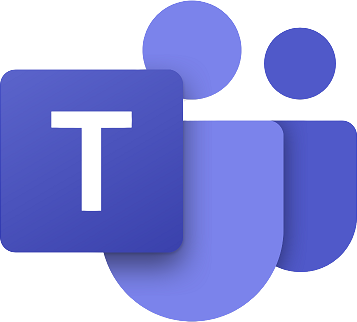Zoom vs. Microsoft Teams: Which should you use for your video conferences?

Microsoft Teams

Microsoft Teams lets up to 250 people join traditional virtual meetings and 10,000 for live streaming events. It works on computers, mobile devices, and with conferencing equipment. Video and audio come in very clear and the program syncs with other Microsoft 365 apps and programs for a bigger and better collaboration experience.
Microsoft Teams
Reasons to buy
Reasons to avoid
Zoom

Zoom hosts up to 500 participants at a time and has a webinar option to include more people. Its collaboration tools allow everyone to work on projects in real-time or show demonstrations through screen share. Zooms works with most operating systems, including Linux, and on most devices.
Zoom
Reasons to buy
Reasons to avoid
Zoom has a big black eye because of reports of recent security breaches. Bad marks aside, it's still a great video conferencing program that is easy to use, compatible with just about every operating system, and hosts up to 500 participants at once. Microsoft Teams supports more participants for live streaming events and doesn't have the same security issues as Zoom. It has audio meetings, also known as call-ins, available as an add-on, but only with its highest priced package.
Comparing the two
| Header Cell - Column 0 | Microsoft Teams | Zoom |
|---|---|---|
| Max participants | 10,000 | 500 |
| Share screen | ✔ | ✔ |
| File share through chat | ✔ | ✔ |
| Breakout rooms | ✔ | ✔ |
| Record meetings | ✔ | ✔ |
| Call-in fee | $4 per month/ per user | Starting at $100 per month |
| Compatible OS | Windows, iOS, Android, Linux | Windows, iOS, Android, Linux |
What to know about Microsoft Teams

Microsoft Teams has four different packages available with a variety of tools and add-ons depending on what you choose. Its free package doesn't let you host meetings with multiple people and actually will redirect you to Skype to use for one-on-one conferences. Its other packages require a yearly subscription to Office 365 in order to tap into Microsoft Teams. You can host a total of 250 in a traditional video meeting, but with the right tools, equipment and add-ons, you can use it to host live events for up to 10,000 people.
This software is more than a video conferencing program.
This software is more than a video conferencing program. It also supports chat and other online collaboration methods through OneDrive, DropBox, and several Microsoft applications. You can attach files in chat or allow direct collaboration through file sharing. This is a good way for everyone to be on the same page and within the same project during video conferences. Screen sharing is also included with all video software packages. With paid subscriptions you can record and save every meeting to your OneDrive.
Meeting hosts with administrative access can choose who to mute and who to allow to speak. You can also choose to have all conversations, questions asked and collaboration done through the in-app chat feature to ensure no one is left out of the conversation. Microsoft Teams lets you create breakout rooms for team building exercises or for allowing multiple meetings to happen at once.
Audio conferencing is available for those who need to call into a meeting rather than join online. However, this service is only available as an add-on and only with Microsoft's highest priced Office 365 subscription. Live streaming and webinar events also require an add-on program and are also only available with the Office 365 E3 package. The only other real drawback to using Teams is you have to have a Microsoft business subscription in order to host a meeting, unlike Zoom where everyone can use it regardless of the office program used by their business.
Be an expert in 5 minutes
Get the latest news from Android Central, your trusted companion in the world of Android
Microsoft Teams is used around the world by businesses, government workers, and schools and hasn't experienced the same security breaches as Zoom. Microsoft includes several layers of security to help keep your information safe, including encrypting all meetings. Some packages let you enable two-step authentication to make it harder for non-invited attendees to crash your meeting.
All about Zoom

Zoom is the best program for connecting to conferencing equipment, including wide lens webcams and telecoms, but also works through a web browser or its mobile app. Participants connect through a shared link sent via email or text and everyone can collaborate with share screen and file sharing through the chat feature. It works with all operating systems, including Linux, and can host meetings with up to 500 people. You can also use the webinar feature to host larger virtual gatherings.
Zoom is the best program for connecting to conferencing equipment.
Launching a meeting is pretty straight forward, though if you're using Zoom through a web browser it is designed to open in a new browser window. Depending on your setup, it's easy for this window to get lost and unintentionally closed or minimized. This also means you do need to disable popup blockers to use Zoom.
During your meetings, Zoom does have tools to let you share your screen to present videos, slide presentations, or other real-time walkthroughs of software programs. As an admin, you can allow participants to mute and unmute themselves, or disable this ability and control this yourself. Images, handouts, files and more can be shared with everyone through the chat feature. Participants can view everyone attending on a grid, or simply hide everyone except the host, or the person speaking to the group. Another neat feature is how users can add a customizable background, which isn't always recommended for professional meetings but is fun nonetheless.
For individuals who can't join via video, Zoom does support call-ins. However, this is an add-on to your Zoom package and starts at $100 and is in addition to the monthly subscription fee for the package you choose. Pro is the lowest package and costs $15 per month per host. If you only have one person who will be setting up and using the meeting room each time, this isn't too bad of a price, but it can get steep if you have several people in your company that need to host meetings with their own teams.
With all paid meeting packages, you can record and save each meeting for whoever needs it. You are given a minimum of 1GB of cloud storage to save MPA or M4A files with additional storage with higher-prices packages. With Zoom's Business and Enterprise packages, you have the option to receive transcripts of your meeting, too.
In a nutshell: Microsoft Teams is better
Microsoft Teams is the better program for video conferencing, especially if you work from home. This is because of the recent Zoom hacks and security breaches, coupled with how many governments and businesses are banning its use.
While this may seem like an easy chance for Microsoft Teams to take the top spot, Teams deserves to be the best based on its own merit. This video conferencing program integrates with most of Microsoft's office applications to support the best collaboration experience for all participants. You can share files outside of the Teams app then use the video conferencing program for a quick check-in. But it is also a great tool for team-building exercises and important conference calls. Microsoft Teams requires you to have an Office 365 subscription, and some tools, like call-in support, are only available for an additional fee and with Microsoft's highest priced business package.
However, if you work in the video conferencing field, Zoom might be your best bet.

Nikki is a commissioned editor for Future Plc covering internet security including antivirus and VPN. With over 18 years of research and writing experience, and 11 years of testing and reviewing internet security solutions, Nikki knows how to dive deep to get the information consumers need to make better buying decisions. She is also a mom to 10 children, and personally uses many of the products she reviews to ensure the safety of her own family.
